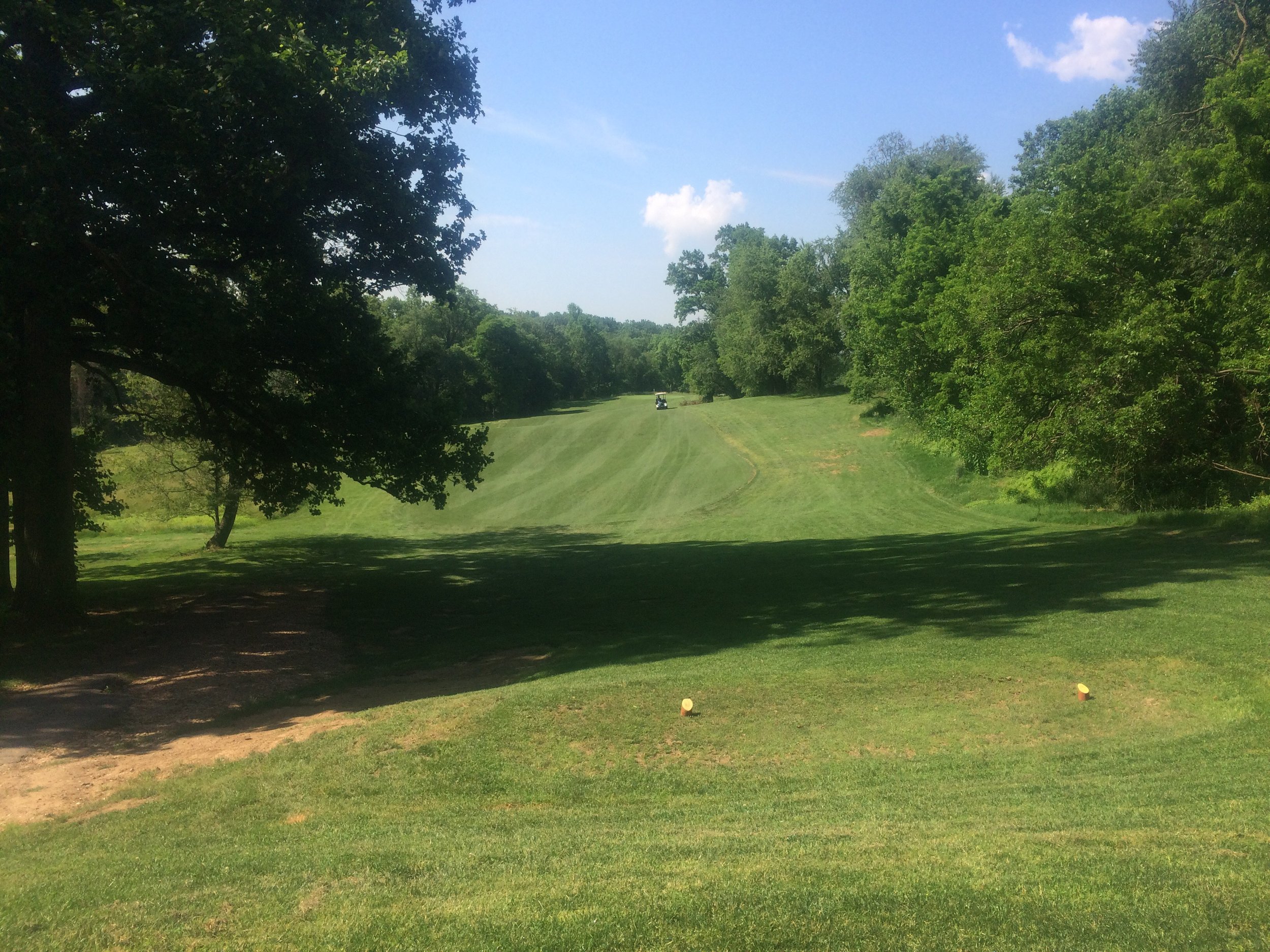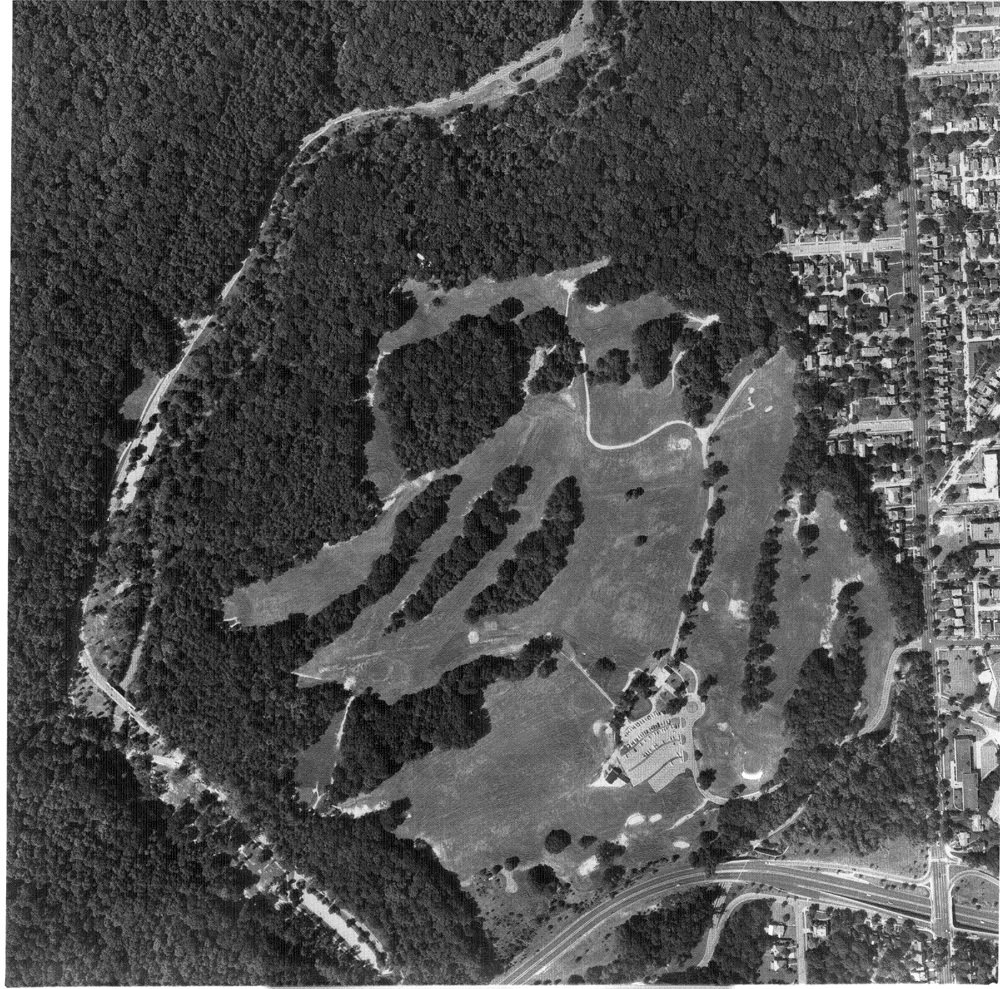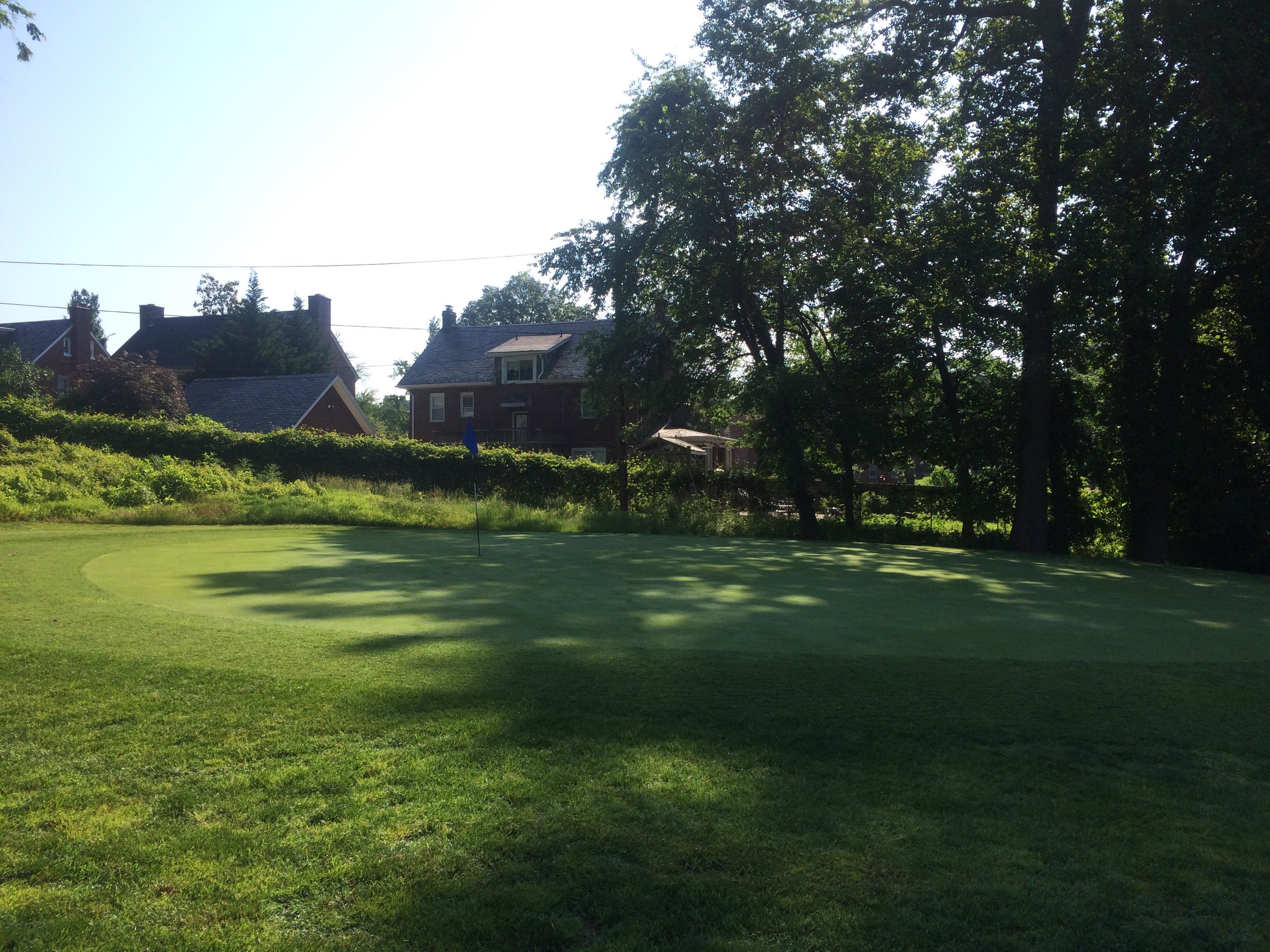Rock Creek Park Golf Course
Washington, DC | 2016 - 2017
Cultural Landscape Inventory
Project Team: Randall Mason, Shannon Garrison, Molly Lester, Mikayla Raymond, Ty Richardson

History
Washington, DC’s first public golf course opened at East Potomac Park in 1920. Its incredible popularity prompted the Office of Public Buildings and Grounds (OPBG) to begin plans for construction of a second public course, located in Rock Creek Park. Construction of the Rock Creek Golf Course began in October of 1921, under the direction of the OPBG. In 1922, the OPBG hired noted golf course architect, William Flynn, to lay out a nine-hole course. Working in the parkland style, Flynn designed a course that highlighted the site’s dramatic topography and incorporated stands of mature trees. A nineteenth-century farmhouse was renovated for use as a clubhouse, and in 1923 President Warren G. Harding dedicated and opened the course.
Like East Potomac, the course was immediately popular and often over-crowded. Within a year, plans were underway to expand Rock Creek Golf Course to a full 18-holes. In July 1924, Flynn returned to Rock Creek to determine the location for the additional nine-holes. Ultimately, Flynn’s new design required radical changes to the existing holes in order to create a cohesive layout, and in the spring of 1926, golfers at Rock Creek had “an entirely new course” (Washington Post, March 24, 1926: 15). The final course occupied approximately 108 acres of land and played at a distance of 5,191 yards, with a par 70. The Office of Public Buildings and Grounds contracted out operation and management of the course to a concessionaire, S.G. Loeffler, who paid for part of the new course’s construction.
Rock Creek Golf Course remained popular and its original design was left relatively unchanged throughout the 1940s and 1950s. Between 1957 and 1958, the expansion of Military Road resulted in the loss of several holes on the front nine. William F. Gordon, a protégé of William Flynn was hired to redesign Holes 3 through 8. In 1964, the National Park Service (NPS) secured funding for construction of a new clubhouse, as part of NPS’s Mission 66 updates throughout Rock Creek Park. Conditions at the course began to deteriorate in the late 1960s and 1970s. Concessionaire S.G.Loeffler shortened the back nine to appeal to players who complained it was too difficult. In 1982, a new concessionaire, Golf Course Specialists, took over the contract at Rock Creek and restored the back nine to its original length. Despite nearly 100 years of continuous use, in 2017, William Flynn’s 1926 design for Rock Creek Golf Course remains largely intact.
Analysis + Evaluation
Contributing landscape characteristics identified for the Rock Creek Golf Course cultural landscape are: land use, topography, spatial organization, circulation, buildings and structures, small scale features, vegetation, views and vistas and natural systems and features.
Land Use: The use and purpose of the Rock Creek Golf Course cultural landscape has not changed since the first period of significance, when the site opened to the public. It has served as a municipal golf course ever since and retains integrity of land use.
Topography: The topography of Rock Creek Golf Course has changed very little since construction was completed in 1926. The course’s highest point—roughly 290-feet above sea level—and its lowest point, about 200-feet, remain the same as during the first period of significance. As such, it retains integrity of topography to the 1921-1927 period of initial construction.
Spatial Organization: The spatial organization at Rock Creek Golf Course remains much as it was during the first period of significance. The direction of play through the landscape is still centered around the clubhouse. The course itself retains the counterclockwise directional routing that Flynn first designed in 1921. The division between the front and back nine is intact, and the current organization of these two distinct halves, which both play in and out from the clubhouse, and were designed so they might be played as separate, nine-hole courses, remains close to Flynn’s original plan. Densely forested areas continue to define fairways and views towards greens on the back nine, and the front nine is retains a more open feeling. Overall, the site retains integrity of spatial organization to the first period of significance.
Circulation: Contributing landscape features related to Rock Creek Golf Course’s circulation include part of Joyce Road and the Golf Course Access Road. Both were constructed during the first period of significance, and are relatively unchanged since their original period of construction. A circular cul-de-sac was added to the Golf Course Access Road when the clubhouse was rebuilt in 1964. At that time the parking lot was expanded. A pre-Civil War road segment extending north from the clubhouse was incorporated into the circulation plan for the course. This road was converted to a cart path in the 1970s and is considered a contributing feature to the first period of significance.
Buildings and Structures: For the purpose of this CLI, Rock Creek Golf Course is treated as a single structure; the description of the golf course structure includes the overall approach to the course’s design and layout, as well as the design of individual holes (including tees, fairways, greens and hazards). The course as a whole, along with the clubhouse, collectively contributes to the overall integrity of the Rock Creek Golf Course as a public recreational landscape.
Though Rock Creek Golf Course has experienced a series of changes since construction was completed in 1926, the overall landscape retains nearly all of the essential features present during that period that make it identifiable as a public golf course, designed during the early 20th century by an important golf course architect. Among these features are: an eighteen-hole course, divided into two distinct nine-hole courses, both of which play in and out from the clubhouse; a layout centered around a central clubhouse, a parkland-style course that incorporates the site’s natural conditions, which include stands of mature trees and varied topography on the back-nine and a flatter, more open landscape, with fewer trees on the front nine. As such the course retains integrity as relates to National Register Criterion A, for importance in the area of Recreation, as one of the earliest public golf courses in the District of Columbia.
As relates to Criterion C and the landscape’s importance as a work of golf course architect William Flynn, the majority of Rock Creek’s fairways and greens, particularly on the back nine holes, are largely unchanged since 1926. Though the expansion of Military Road in the 1950s resulted in the loss of original Holes 3, 4 and 5, William Gordon’s 1957 alterations to the course’s front nine were sympathetic Flynn’s original design. Gordon was able to reuse parts of Flynn’s 1926 tee box locations, fairways and greens when re-working the affected sections of the course. The front nine’s open and rolling landscape, originally farmland, was a feature that Flynn emphasized in his design for the course’s front nine. This feeling remains intact. So does the tight, hilly design for the back nine—considered by many to be the highlight of the course—and built on what had historically been uncultivated woodland. The distinctive, natural quality of Flynn’s original design remains evident today and as such the course has integrity of buildings and structures as relates to Criterion C.
The only other contributing building within the landscape is the clubhouse, which continues to reflect the Mission 66 style adopted by the park and constructed throughout Rock Creek during the second period of significance.
Small Scale Features: None of the small scale features at Rock Creek Golf Course date to the period of significance, and there is little documentation of original features from either period of significance. A number of sunshades dating to the second period of significance were present at the beginning of field work, but were dismantled by the concessionaire, at the request of NPS, in the fall of 2016, Rock Creek Golf Course does not retain integrity of small scale features.
Vegetation: Character-defining vegetation at Rock Creek Park includes: the open, relatively treeless nature of vegetation on the front nine of the course, a result of the land’s historic use as farmland; the densely forested vegetation on the back nine, which is used to frame fairways and greens and is the result of the area’s history as uncultivated woodland; a row of red cedars (Juniperus virginiana) along the cart path north of the clubhouse, and a number of red oaks (Quercus rubra) and magnolias (Magnolia sp.) around the clubhouse. The incorporation of mature trees was a hallmark of William Flynn’s design, and the original 1926 tree stands along fairways, especially on the back-nine, and around the course’s perimeter, are intact and retain integrity. Conversely, the more open front nine, which is comparatively free of trees between fairways, is another hallmark of Flynn’s original landscape design and is still intact. More research is needed to determine when exactly the row of red cedars was planted along the northern access road/golf cart path. The road itself dates to the 1850s, but the trees do not appear on maps until the early 20th century. Like the native vegetation surrounding the site, Flynn incorporated these cedars into his course design and they are considered a contributing feature. Oak and Magnolia trees surrounding the clubhouse date to the second period of significance and are also contributing.
Views and Vistas: Contributing views at Rock Creek include views along Flynn’s original fairways, toward greens on Holes 1 through 18 and picturesque views located at various points throughout the course. Where Flynn’s original fairways and green locations remain intact, views between them retain integrity. Some original views have been lost due to 90 years of vegetation growth throughout the site, but many picturesque, scenic views are still present, especially on the back nine. These include views of mature tree stands, dramatic topography, deep ravines and open rolling hillsides, which all retain integrity to Flynn’s original design of views along the course.
1948 aerial view
1958 aerial view
1968 aerial view
1978 aerial view
1988 aerial view
1995 aerial view
2016 conditions. Photo by Shannon Garrison.
2016 conditions. Photo by Shannon Garrison.
2016 conditions. Photo by Shannon Garrison.
2016 conditions. Photo by Shannon Garrison.
2016 conditions. Photo by Shannon Garrison.
2016 conditions. Photo by Shannon Garrison.











